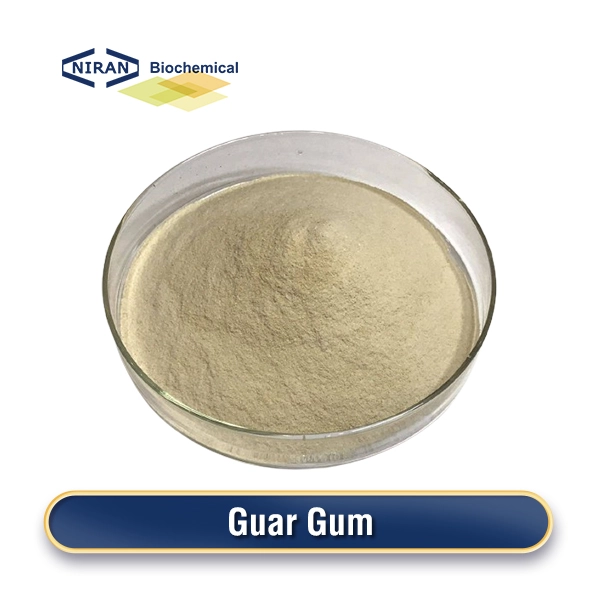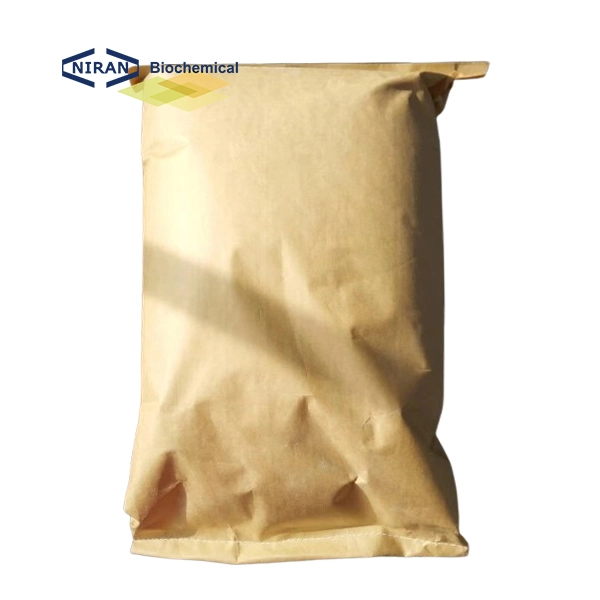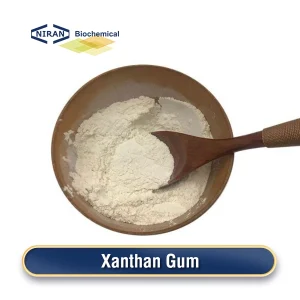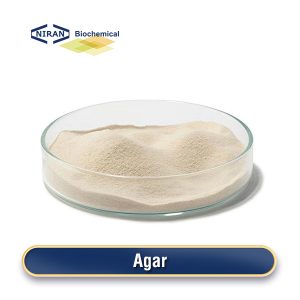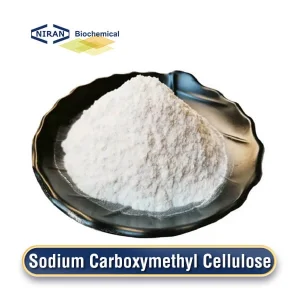What is Guar Gum?
An extract of the guar bean is known as guar gum. It is a galactomannan with a white to slightly yellow free-flowing powder appearance. It thickens quickly because it dissolves in water and turns into a gel-like substance when it comes into contact with it. It is often used as a thickener in food additives.
Guar gum is extracted mostly from the seeds of the guar bean legume. The seeds are dried, ground, and hydrolyzed under pressure. The pressurized hydrolyzed mixture is then precipitated with 20% ethanol. It is then centrifuged to remove unnecessary impurities and extract pure guar gum components. The guar gum obtained after centrifugation is then dried and crushed again to form the final food-grade guar gum product.
Related parameters:
| Items | Standards |
| Odor | Odorless or slight beany smell |
| Viscosity/mPa.s 1% Sol. 25 ℃, 2hours, | 6000 min |
| Drying Loss, w/% | ≤ 15.0 |
| Ash, w/% | ≤ 1.5 |
| Non-soluble in Acid, w/% | ≤ 7.0 |
| Boric Acid Test | Pass |
| Protein, w/% | ≤7.0 |
| Starch Test | Pass |
| Total As(as As)/(mg∕kg) | ≤ 3.0 |
| Pb/(mg∕kg) | ≤ 2.0 |
| Total Plate Count/(CFU∕g) | ≤ 5000 |
| Coli Group/(MPN∕g) | <30 |
Recommended dosage:
| Food name | Maximum usage(g/kg) |
| Beverages | 1-5 g/kg |
| Dairy products | 1-5 g/kg |
| Sauces and dressings | 2-8 g/kg |
| Seasoning dough and bread | 2-10 g/kg |
| Canned foods | 2-8 g/kg |
| Meat products (ham, sausage, etc.) | 2-8 g/kg |
| Condiments | 2-8 g/kg |
| Yogurt and fermented milk products | 1-5 g/kg |
| Salad dressings | 2-8 g/kg |
| Confectionery and chocolate | 2-8 g/kg |
| Feed additives (pet foods, etc.) | 1-5 g/kg |
| Seasonings and flavor powders | 2-8 g/kg |
Guar Gum has a wide range of uses
1. Thickener: As a natural plant gum, it is mainly extracted from guar beans. It has good water solubility and can significantly increase the viscosity of food, improve the texture and taste of food. It is widely used in the food industry, such as ice cream, frozen pastries, bread, cakes and other baked foods, as well as jelly, salad dressing, yogurt, canned meat, beer, sugar-free beverages and other foods. Along with helping food last longer on the shelf, it can improve food flavor and taste.
2. Stabilizer: In juice and beverages, guar gum can be used as a thickener to make the taste of juice and beverages richer and smoother.
At the same time, it can also stabilize the suspended particles in the juice to prevent precipitation and stratification. Adding guar gum to chocolate products can improve the texture of chocolate, making it more delicate and smooth, and prevent chocolate from crystallizing and separating when the temperature changes.
3. Improve the texture and stability of food: In ice cream and frozen desserts, guar gum acts as a stabilizer to improve the melting resistance and stability of ice cream and frozen desserts, so that they can maintain better texture and taste during storage and transportation.
Adding guar gum to pastries and cakes can improve the texture of the dough and make the pastries softer and more delicate. At the same time, guar gum can also improve the moisture retention of cakes and extend the shelf life.
4. Nutritional and health benefits: Guar gum, as a natural food additive, is widely found in various foods, such as fruits, vegetables, grains, etc.
It can supplement the nutrients needed by the human body, promote digestion, improve immunity, assist in improving constipation, protect cardiovascular and cerebrovascular diseases, etc.
User asked question:
Q: How does guar gum and xanthan gum differ from one another?
A: Guar gum and xanthan gum are two commonly used food thickeners and stabilizers, which have significant differences in their sources, structures and usage characteristics.
The primary ingredient of guar gum is linear polysaccharides, which are derived from the seeds of the guar plant. Although its solubility is slightly worse than xanthan gum, it can be effectively dissolved in warm water and is suitable for products such as dairy products, ice cream and bread that require high viscosity and good rheological properties.
Xanthan gum comes from bacterial fermentation and has excellent cold water solubility and stability under a wide range of pH conditions. Many culinary products, including drinks and salad dressings, frequently contain it. Due to its natural source and good rheological properties, guar gum is particularly prominent in the food industry and can improve product texture and stability.


